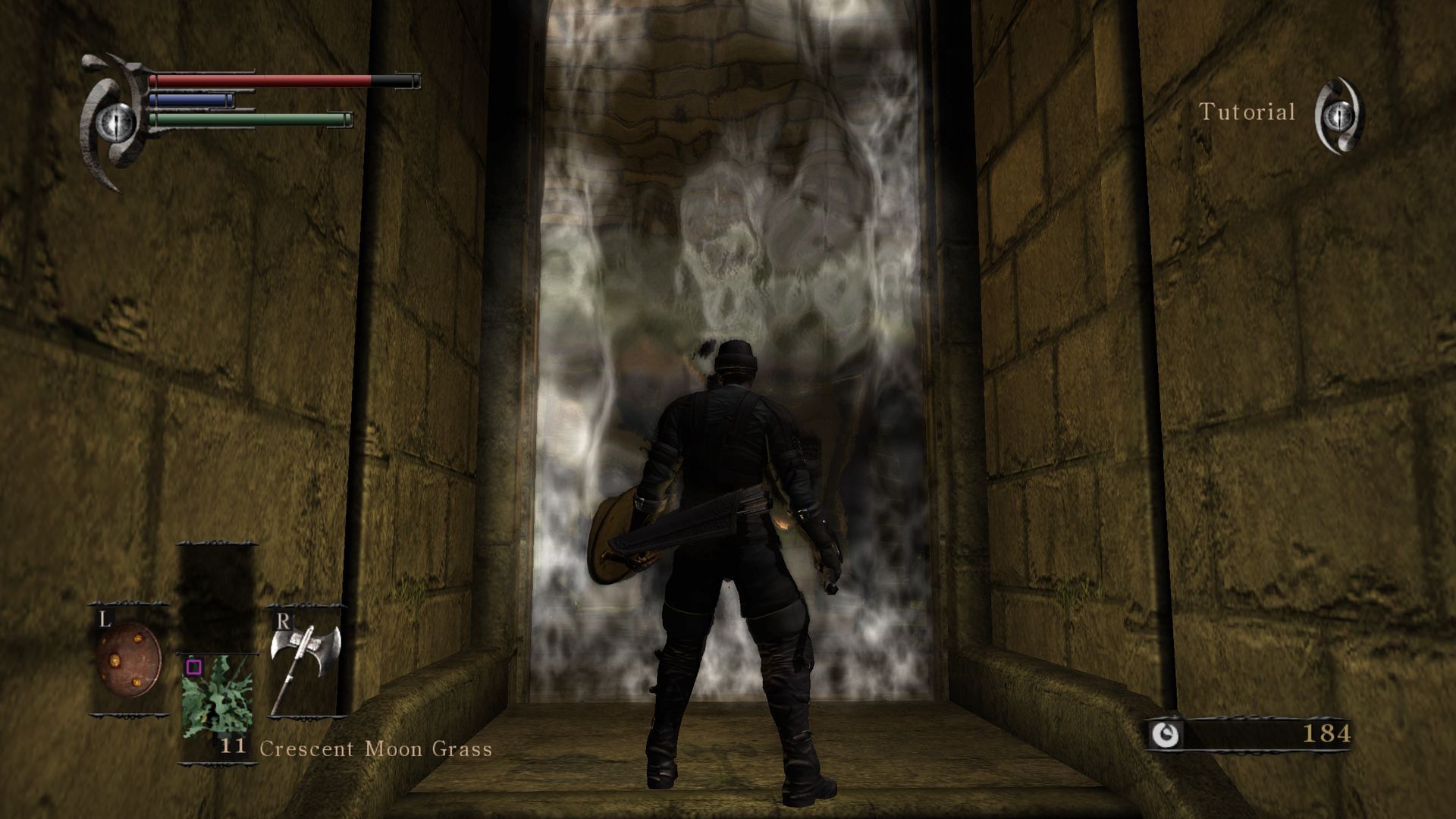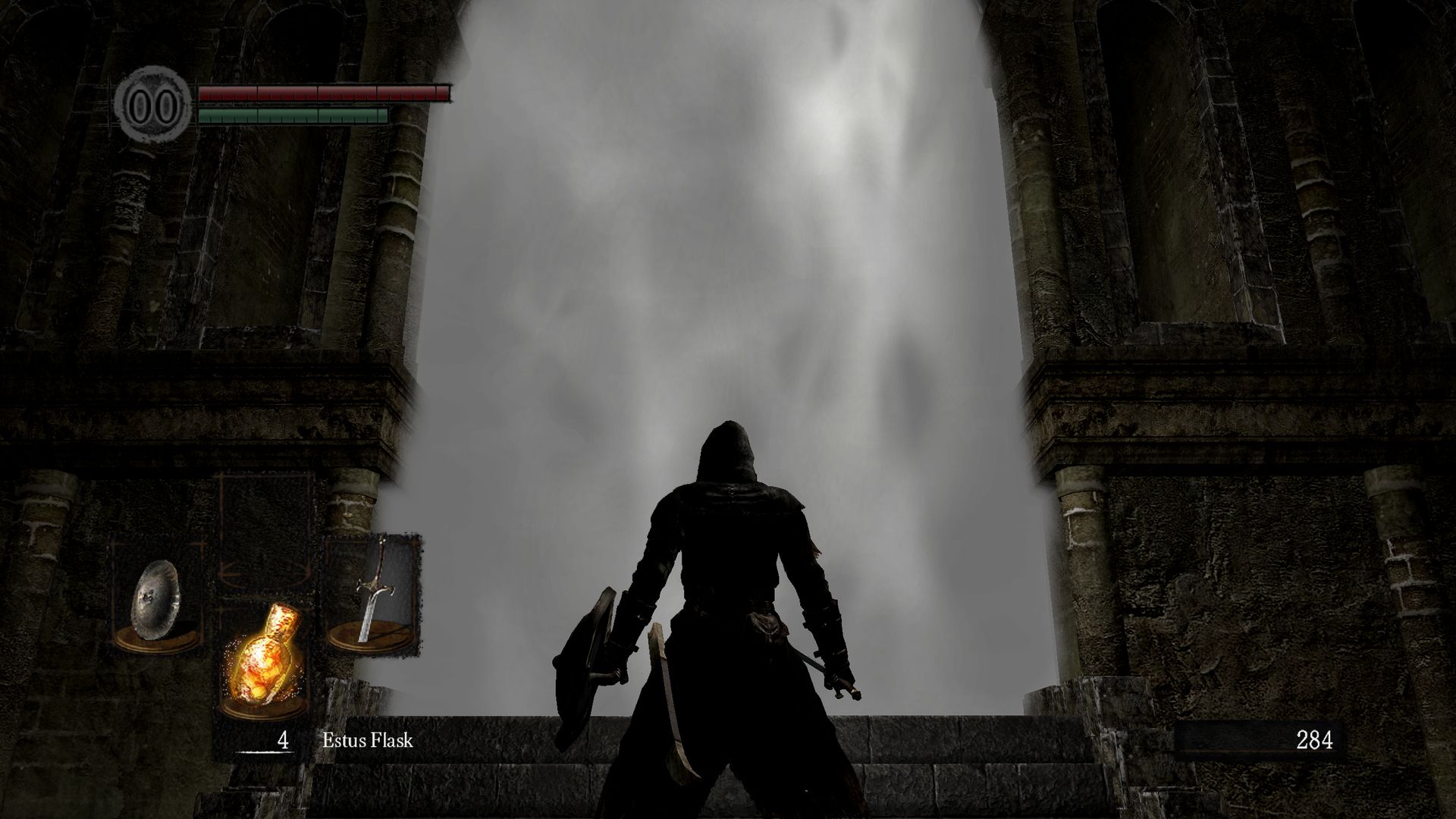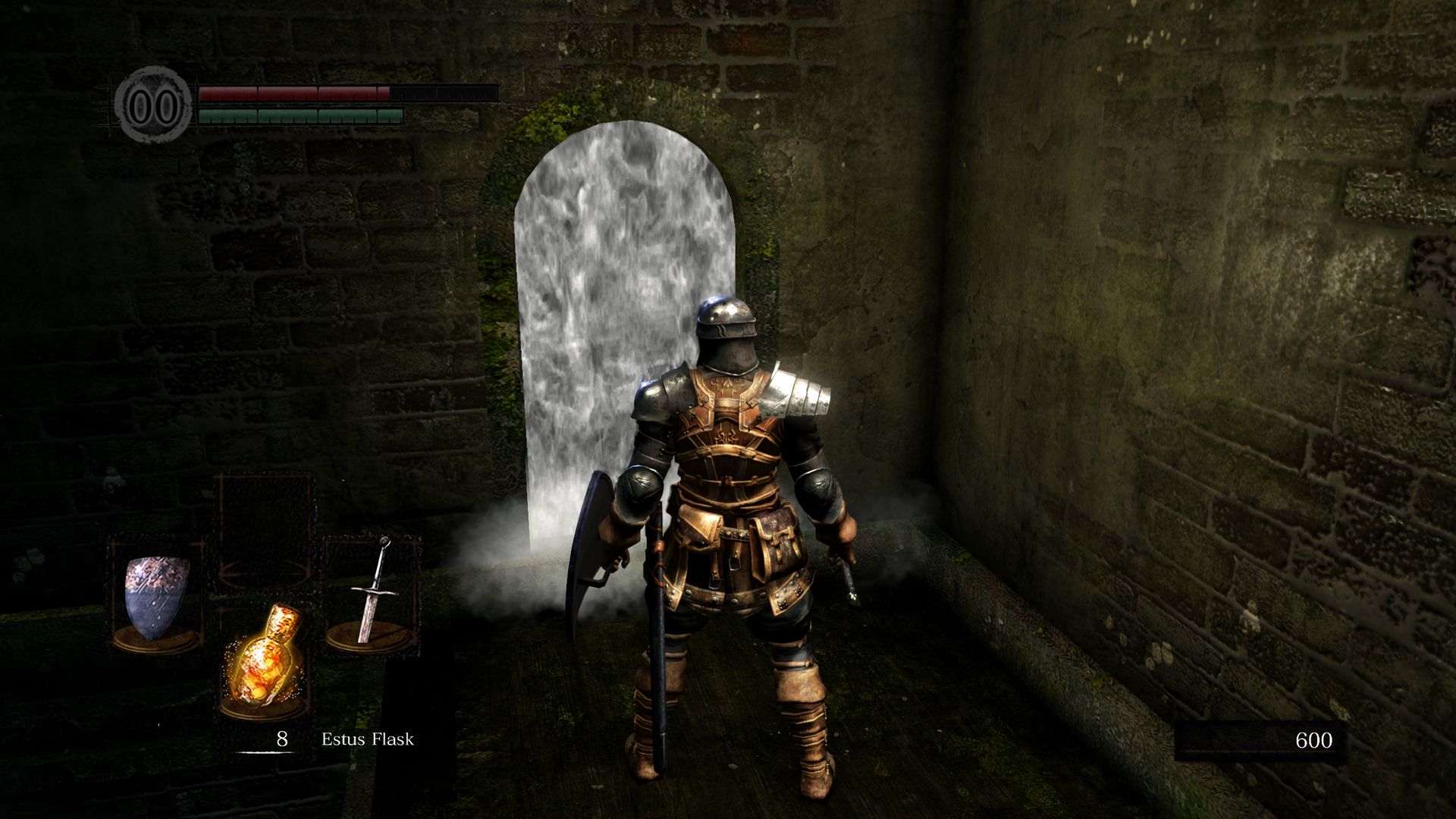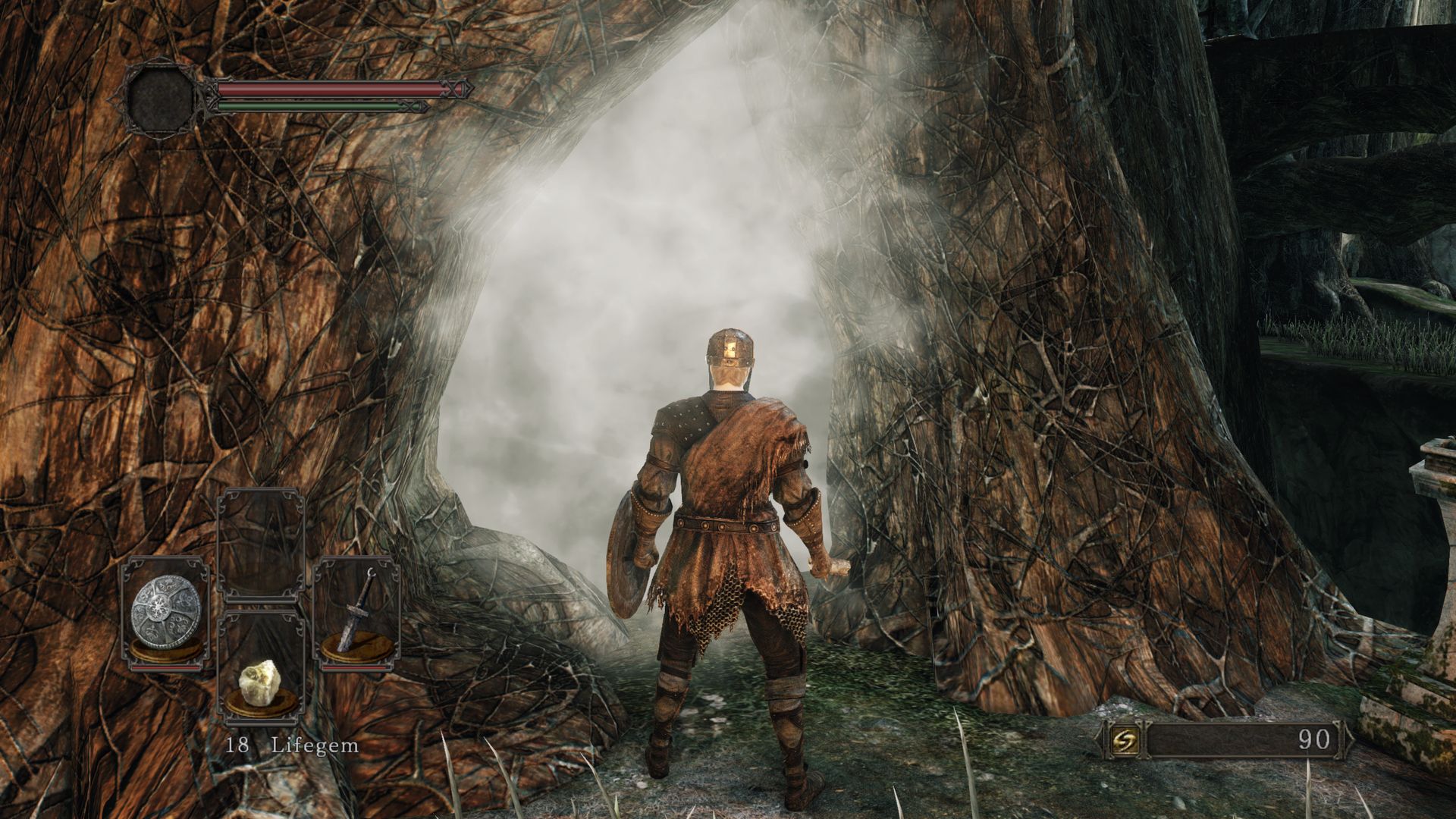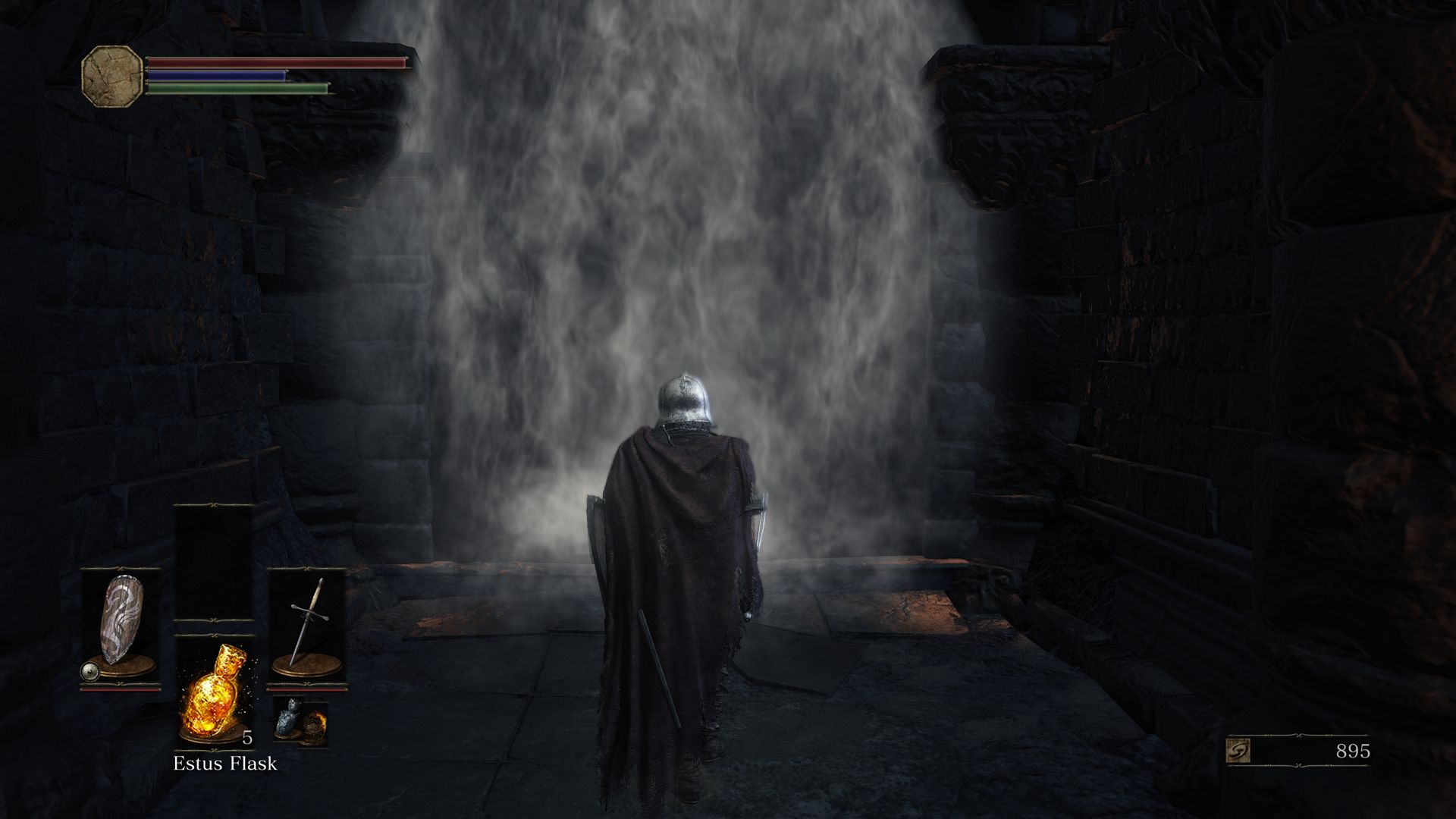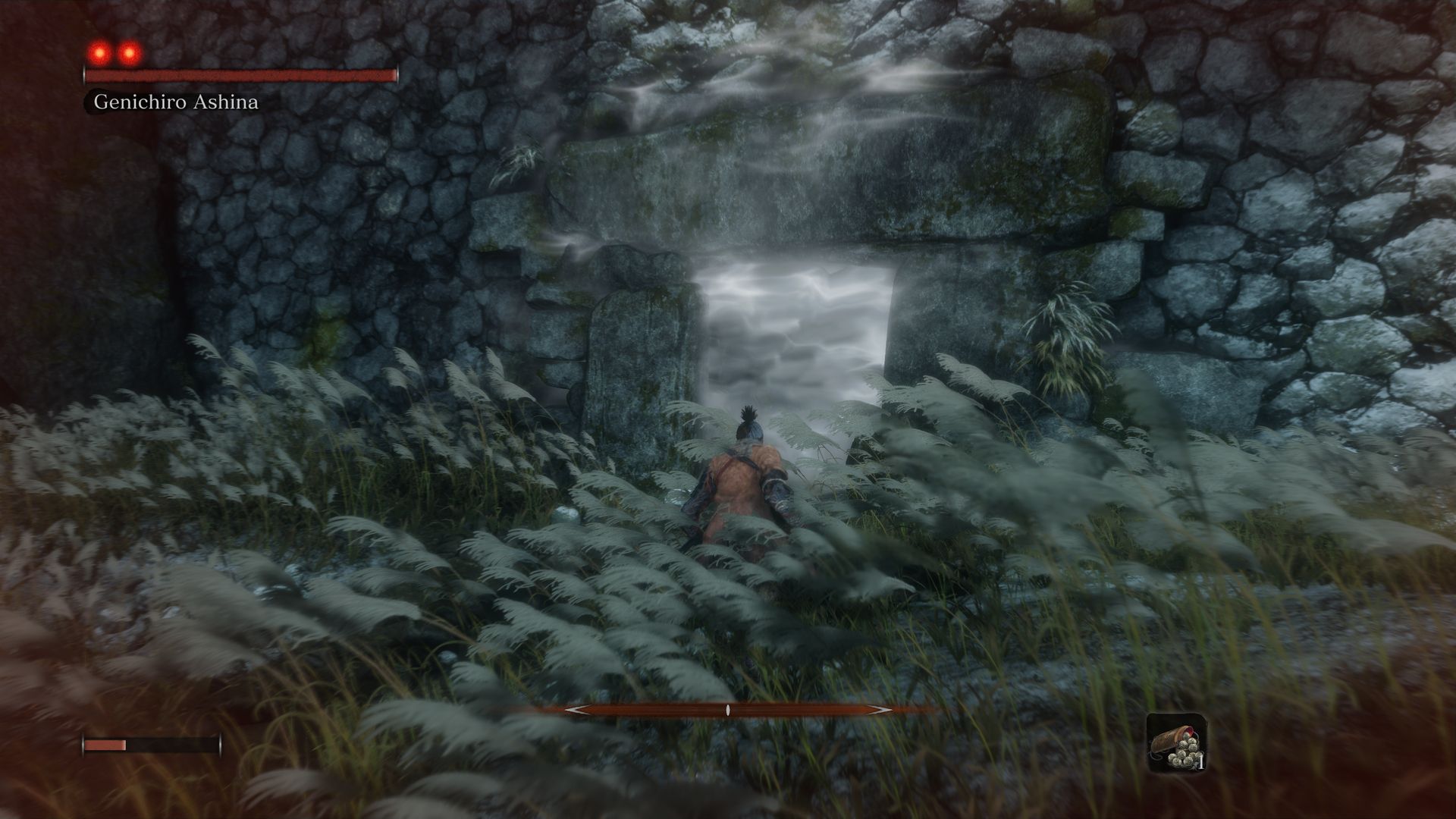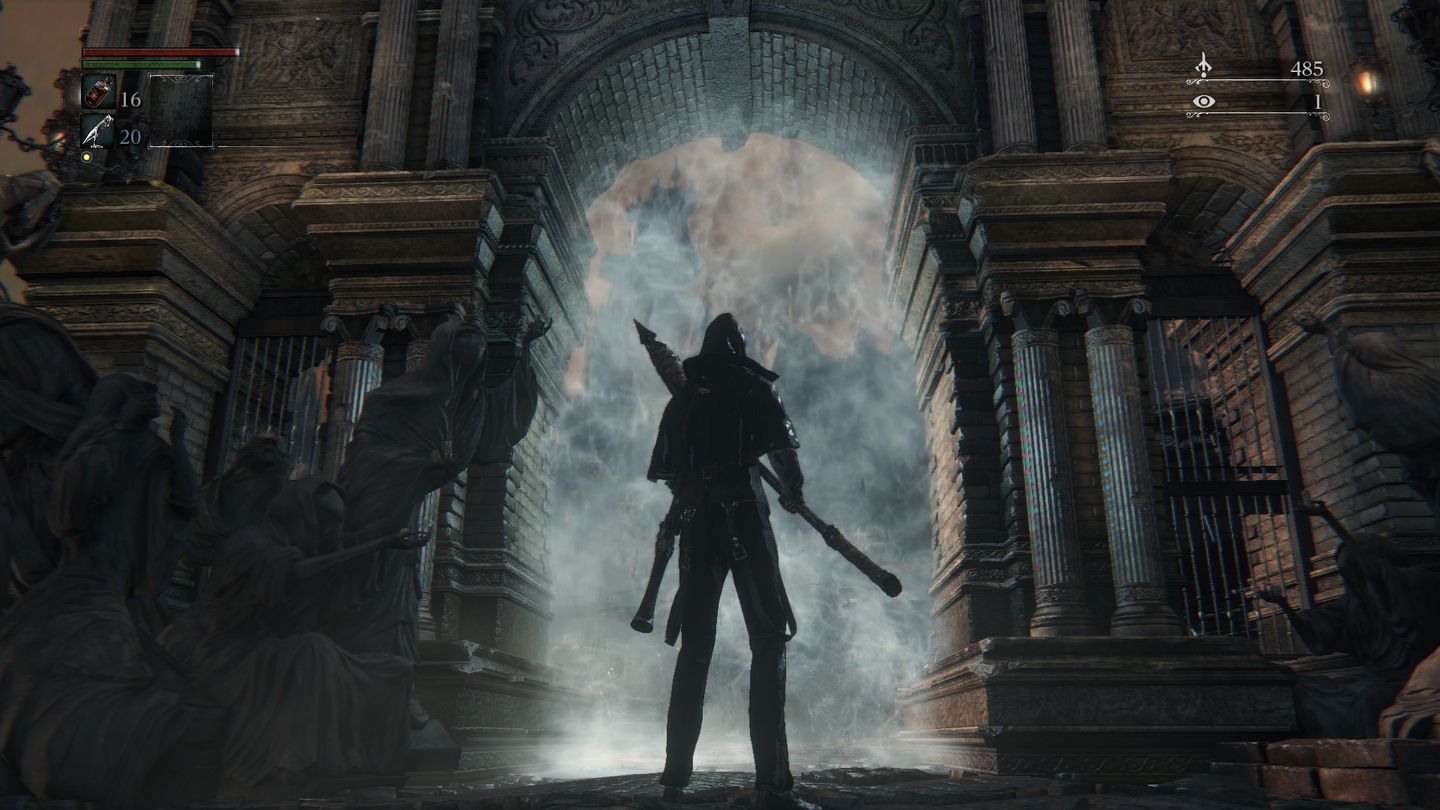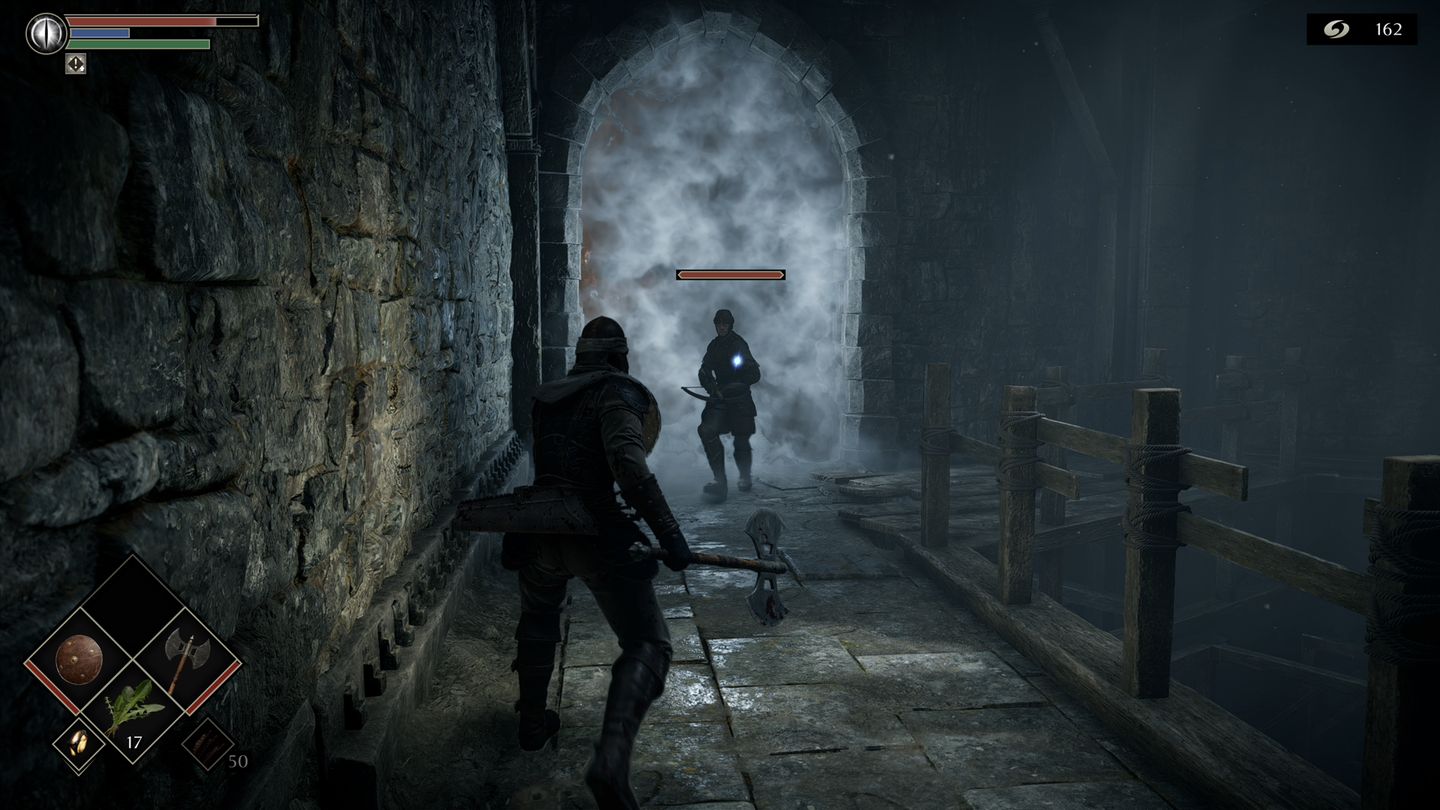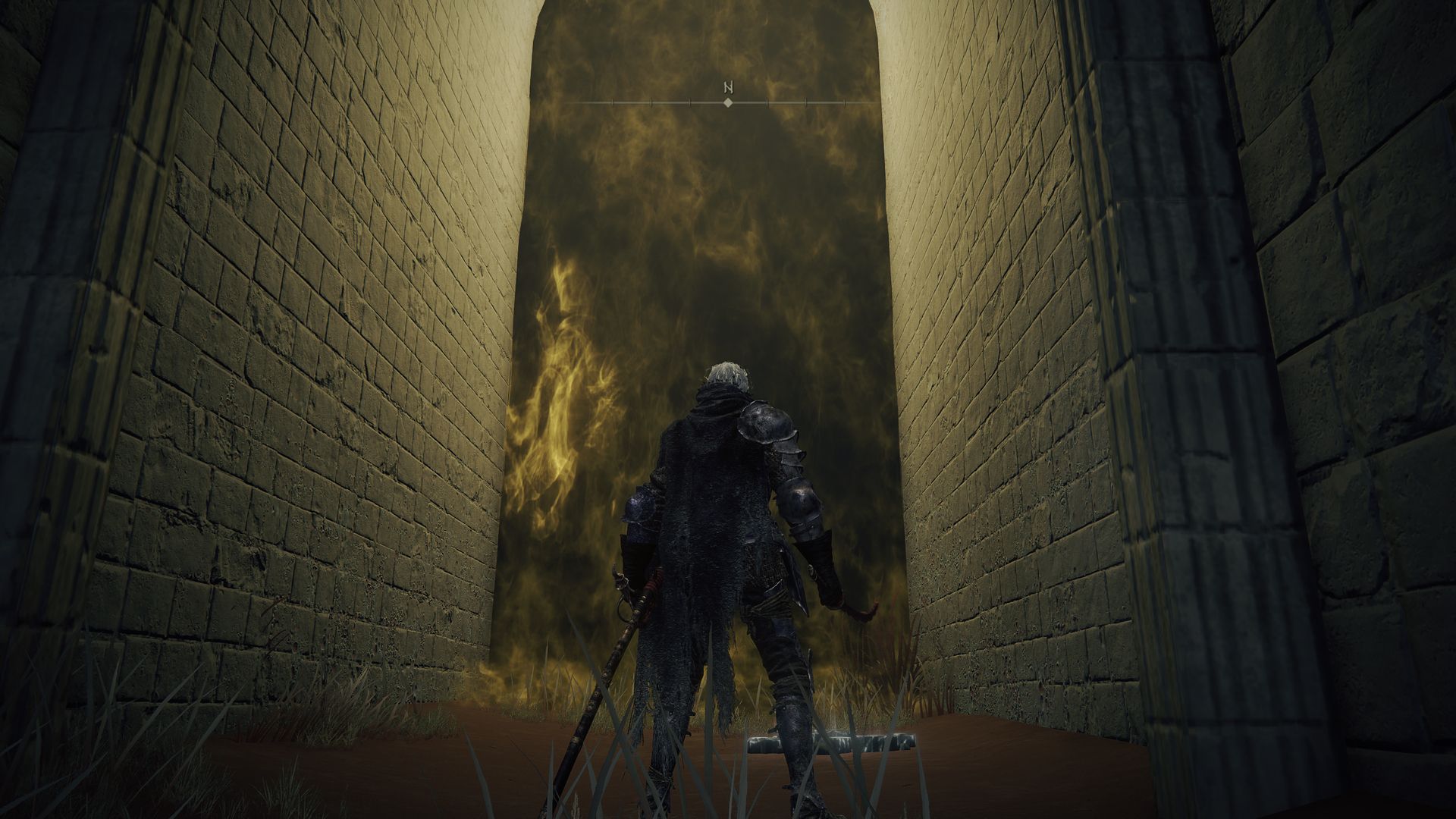FromSoftware’s Souls games have become a benchmark of hardcore action RPGs, serving as the inspiration for titles like Nioh, The Surge, and Hollow Knight. Many of these games feature the hallmarks of a FromSoftware title with their interconnected worlds, challenging boss fights, and fight-die-repeat gameplay loop. However, one small detail that adds a distinct touch to FromSoftware’s Soulsborne games is the use of rich, shifting fog walls separating the dungeon from the boss fight.
FromSoftware’s worlds routinely paint a picture of decay and corruption as the initially weak player character challenges gods and monsters that seem larger than life. After a series of tight corridors and enemy-ridden traversal, players will often encounter a fog wall, hiding its secrets within. Whether a new boss fight or simply a new area to explore, players must be brave enough to pass through the misty barrier to see what's inside. Throughout FromSoftware’s catalog of Souls games, the fog wall has evolved, changing subtly and even crafting lore implications that players may miss.
Demon's Souls
Demon’s Souls would be the first time players could gaze upon the mysterious fog walls that would take root in every FromSoftware game in the future, explained in the lore as a consequence of the demon invasion of Boletaria. Fog walls in Demon’s Souls take a translucent appearance, refracting the image on the other side while obscuring sightlines of any new areas and monsters waiting for the player. As players approach the fog gates, they can note how the white mist cascades upwards along the threshold parameters of the dungeon’s doorway. Still in its first iteration, Demon’s Souls’ fog walls lack any volumetric effects, sticking close to door frame confines.
Dark Souls
Unlike Demon’s Souls, Dark Souls presents its fog walls as a thick layer of fog while still closely following its door frame. Gone are the transparency effects of the previous game, as the mist entirely obscures what is behind each door. Dark Souls’ fog gates tend to shift upwards and downwards across the sides and center of the entrance to create the effect of a breathing body of mist. Much like its predecessor, Dark Souls scatters fog walls throughout its world to section off parts of dungeons and separate dungeons from the boss rooms, keeping players guessing about what's on the other side.
Dark Souls Remastered
After a period of critical acclaim, even being titled “Game of the Decade” by some players, FromSoftware would remaster the original Dark Souls, bringing it to eighth-generation consoles and PC with Dark Souls Remastered in 2018. Dark Souls Remastered would alleviate performance issues, introduce reworked textures, and display new fog walls. Compared to the original Dark Souls, fog walls in the remaster would showcase a much busier and dense layer of fog that cascades in a downward direction. Notably, fog walls in Dark Souls Remastered feature a volumetric mist effect at the foot of each threshold, complemented by its downward shift in motion.
Dark Souls 2
Dark Souls 2 featured a darker, more sinister world that kept players guessing what was coming next, aided by its fog walls that began to litter that world more than in previous titles. Later taking advantage of eighth-generation console horsepower, Dark Souls 2: Scholar of the First Sin would showcase thick fog walls extending past doorways thanks to new volumetric effects. In keeping with the creepy and ominous feeling of Drangleic, Dark Souls 2’s fog walls sporadically move in multiple directions and engulf the player with their reach.
Dark Souls 3
Dark Souls 3’s Kingdom of Lothric retains much of the dreary and decaying world aesthetic of previous titles but with enhanced graphical fidelity and a slightly reworked fog wall. Unlike the Souls games before it, Dark Souls 3’s fog walls now only cascade downward, giving the barrier a more curtain-like appearance. Dark Souls Remastered, which was released two years after Dark Souls 3, contains fog walls that move in the same direction, taking some queues from this game. Notably, the fog in each gate is much also thinner and more sparsely laid out than the fog walls of the previous games.
Sekiro: Shadows Die Twice
After Dark Souls 3, FromSoftware took the Souls formula in a new direction with Sekiro: Shadows Die Twice. In a significant departure from the Souls games before it, Sekiro would remove the fog walls as means to enter a boss arena in favor of grand entrances at each boss attempt. However, FromSoftware would still utilize fog walls as a way to keep players within the combat arena the same way they functioned in previous games. Sekiro’s fog walls would return to a slightly translucent aesthetic, clipping past the doorway boundaries in some instances. Notably, the fog gates at each boss room move horizontally compared to previous games, where they shift up or down. Sekiro’s fog gates also feature a filmy appearance compared to the smoky aesthetic of Souls games.
Bloodborne
A glance at Bloodborne’s fog walls demonstrates the newfound graphical prowess that FromSoftware achieved with the power of 2015's then-young PS4. Bloodborne takes its story inspirations from the cosmic horror genre and implements elements of it into the new fog walls as they cast an otherworldly glow onto its doorway and surrounding areas. Similar to Demon's Souls, Bloodborne returns the fog wall to a translucent nature, but this time with smoky particle effects and an amorphous shape to its mist. Referred to as “Nightmare Fog” by many fans, it is up to fan speculation to decipher how these fog gates tie into Bloodborne’s lore; some assume that the fog walls are a way for the Hunter to shield themself from their nightmares.
Demon's Souls Remake
As a PlayStation 5 exclusive, 2020's Demon’s Souls Remake would create a showcase for the next generation of graphical horsepower. It creates an impressive fog wall featuring new lighting and graphical techniques. Demon’s Souls’ fog walls are multilayered, using volumetric fog and particle effects to create thick clouds of mist. Unlike previous Souls games, these fog gates do not fully engulf doorways in all instances, instead offering brief glimpses of what's on the other side as the fog shifts and breathes throughout dungeons and completely obscures demons at the boss door. Fog walls in Demon’s Souls Remake cascaded downwards and diagonal from the center compared to the straight downward motion of prior Souls games.
Elden Ring
Instead of reusing white and grey fog walls in Elden Ring, FromSoftware elects to give boss fog walls a golden hue, in line with Elden Ring’s lore in which the Tarnished fights demigods in possession of shattered portions of the Elden Ring. However, Elden Ring is not entirely missing FromSoftware’s classic white fog walls. The white mist returns for fog gates used to separate rooms within dungeons, featuring various levels of transparency depending on what's behind them. The golden fog walls at boss doors look similar to how fog walls did in Dark Souls 3 but this time with the banner colors of the Golden Order. Elden Ring’s golden fog walls fall from the top and feature very few graphical mist effects extending outside its barrier parameters.
FromSoftware has come a long since its days of glass-like fog gates in Demon's Souls. Should the developer decide to revisit the Souls series in the future or create sequels to the critically acclaimed Elden Ring, players will always be ready to pass through the fog wall and take on whatever is on the other side.


